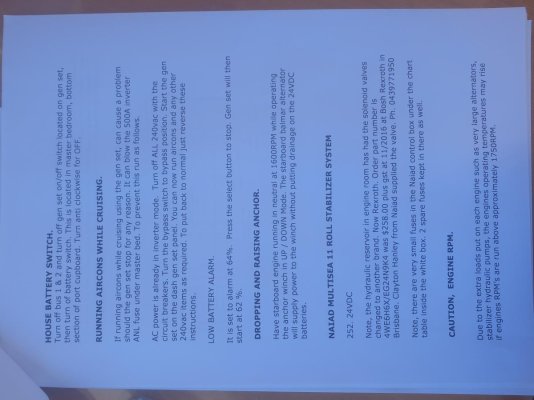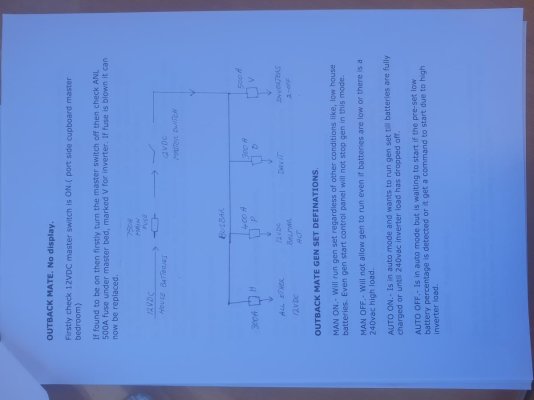In alot of boats, passengers sit very close to electrical systems (such as batteries) of significant power, usually for a considerable amount of time. Apparently the currents achieved in these systems and the short distances between the power devices and the passengers mean that the latter could be exposed to relevant magnetic fields. In my case approx 1000 amp 12v battery bank underneath the main cabins bed, around 12 inches below the bottom of the mattress. I'm wondering if the hazards of magnetic field exposure or electromagnetic radiation (EMR) must be taken into account?
Is it usual to put such a large storage of batteries under the bed you potentially spend 1/3 of your day on?
The previous owner of this particular boat has told the broker he doesn't want anything more to do with the boat as all his family members get sea sick on the boat and most other people aswell if they come aboard for any extended lenght of time.
The sea sickness could be enhanced by the relatively narrow beam to length of the boat aswell as the heavy steel superstructure which could make it a little rolley at times. It's a 55ft long, 15ft beam, 45 tonne steel displacement pilothouse cruiser. There is a stability report available on the boat which stipulates the necessary requirements for when cruising such as making sure fresh water tank is full, gray and black are empty, centre fuel tank is empty, the other 4 are balanced except for tank number 1 which needs to have 350 litres of fuel less than tank 4. The boat does have Naiad Stabilizers but still thinking it could potentially be quite rolley.
So there are 2 questions,
1 - could the close proximity of the batteries be a potential health problem OR add to the sea sickness of passengers through the EMF on a steel boat?
2 - could the build of the boat as described be a problem in anything but smooth cruising conditions?
I have been for a sea trial but unfortunately conditions were smooth.
Is it usual to put such a large storage of batteries under the bed you potentially spend 1/3 of your day on?
The previous owner of this particular boat has told the broker he doesn't want anything more to do with the boat as all his family members get sea sick on the boat and most other people aswell if they come aboard for any extended lenght of time.
The sea sickness could be enhanced by the relatively narrow beam to length of the boat aswell as the heavy steel superstructure which could make it a little rolley at times. It's a 55ft long, 15ft beam, 45 tonne steel displacement pilothouse cruiser. There is a stability report available on the boat which stipulates the necessary requirements for when cruising such as making sure fresh water tank is full, gray and black are empty, centre fuel tank is empty, the other 4 are balanced except for tank number 1 which needs to have 350 litres of fuel less than tank 4. The boat does have Naiad Stabilizers but still thinking it could potentially be quite rolley.
So there are 2 questions,
1 - could the close proximity of the batteries be a potential health problem OR add to the sea sickness of passengers through the EMF on a steel boat?
2 - could the build of the boat as described be a problem in anything but smooth cruising conditions?
I have been for a sea trial but unfortunately conditions were smooth.











